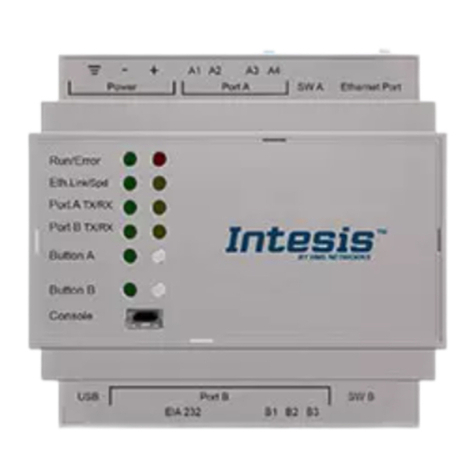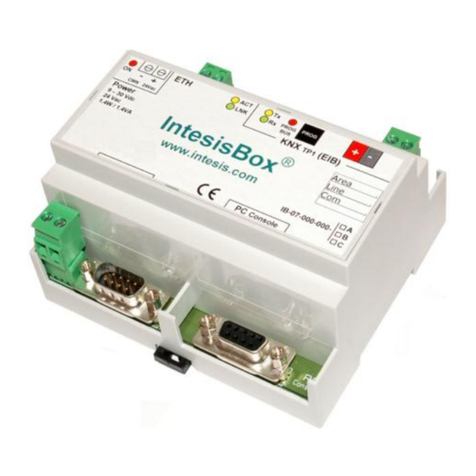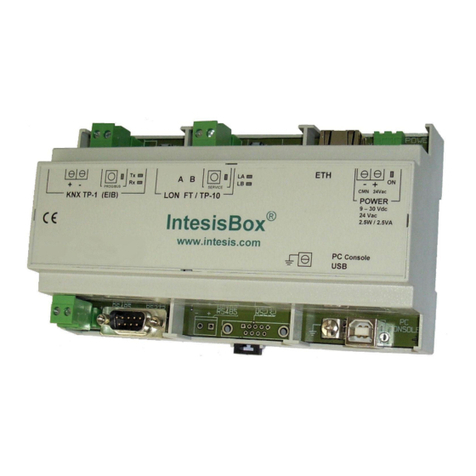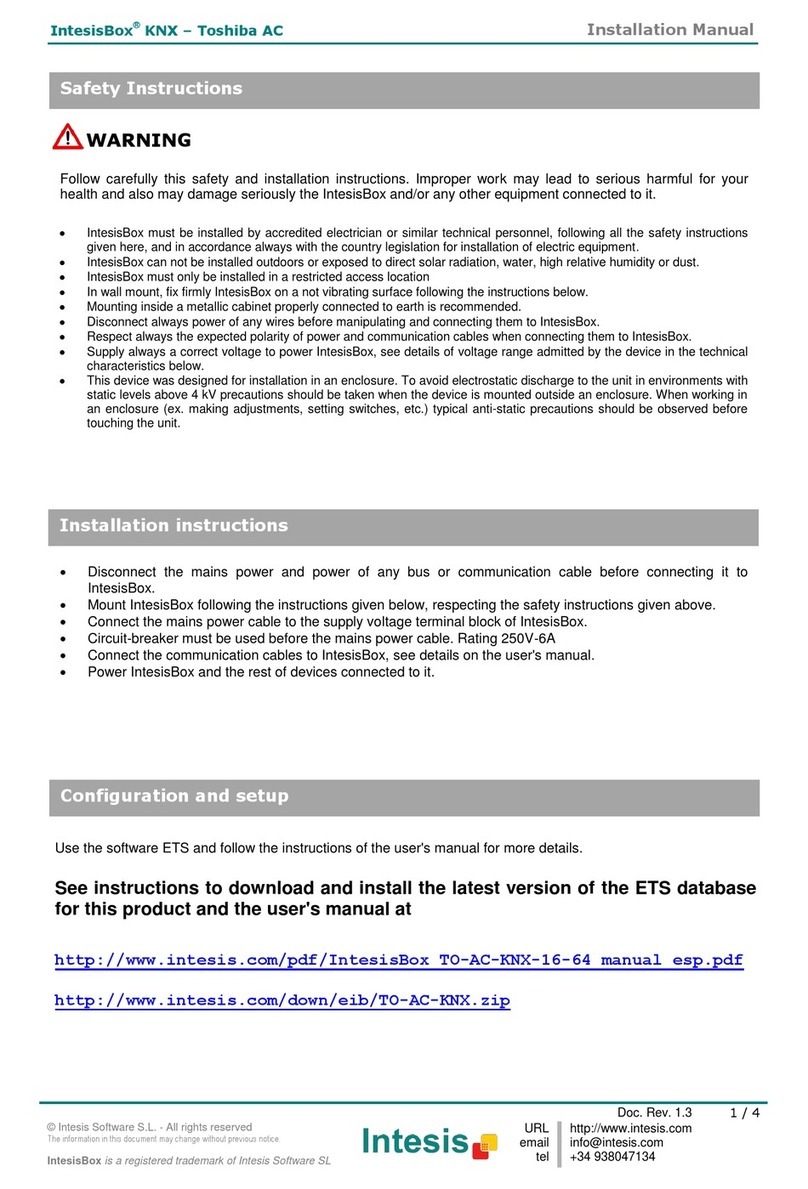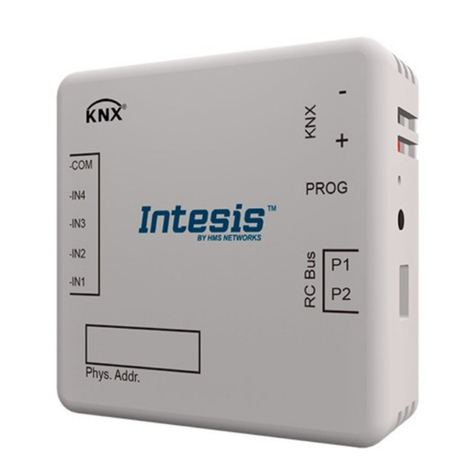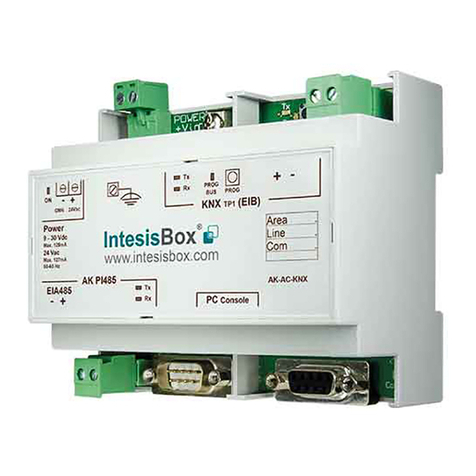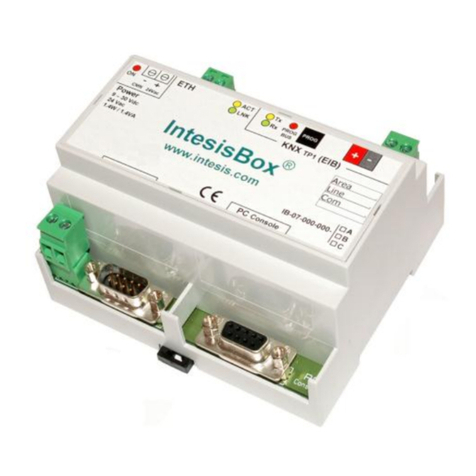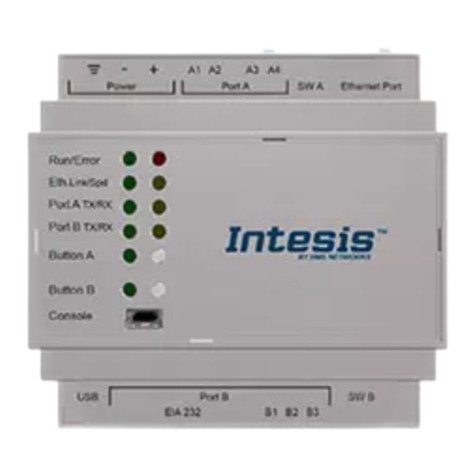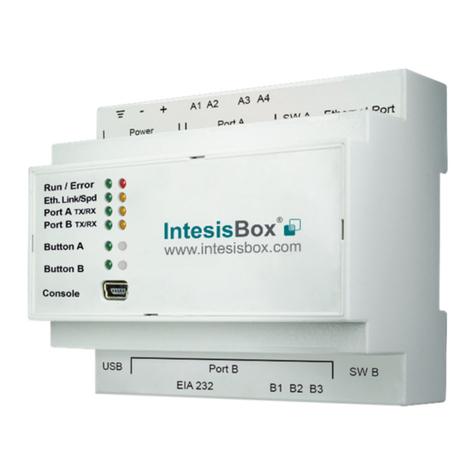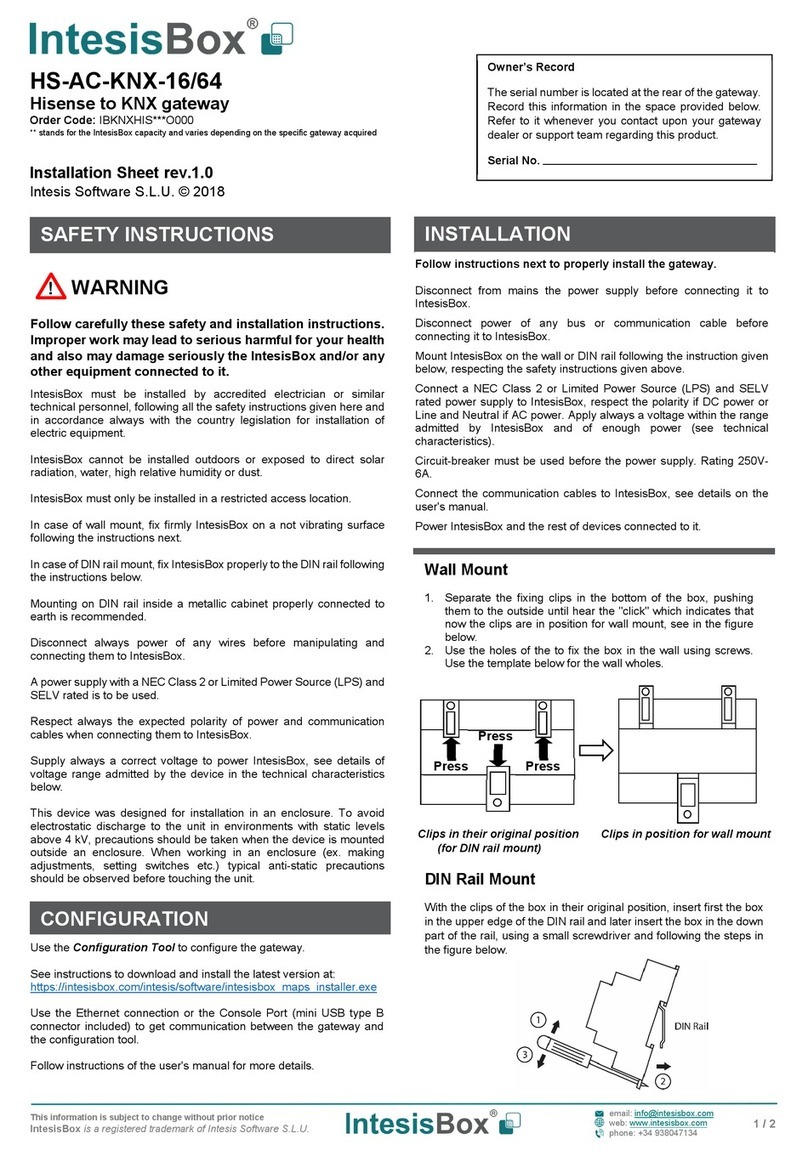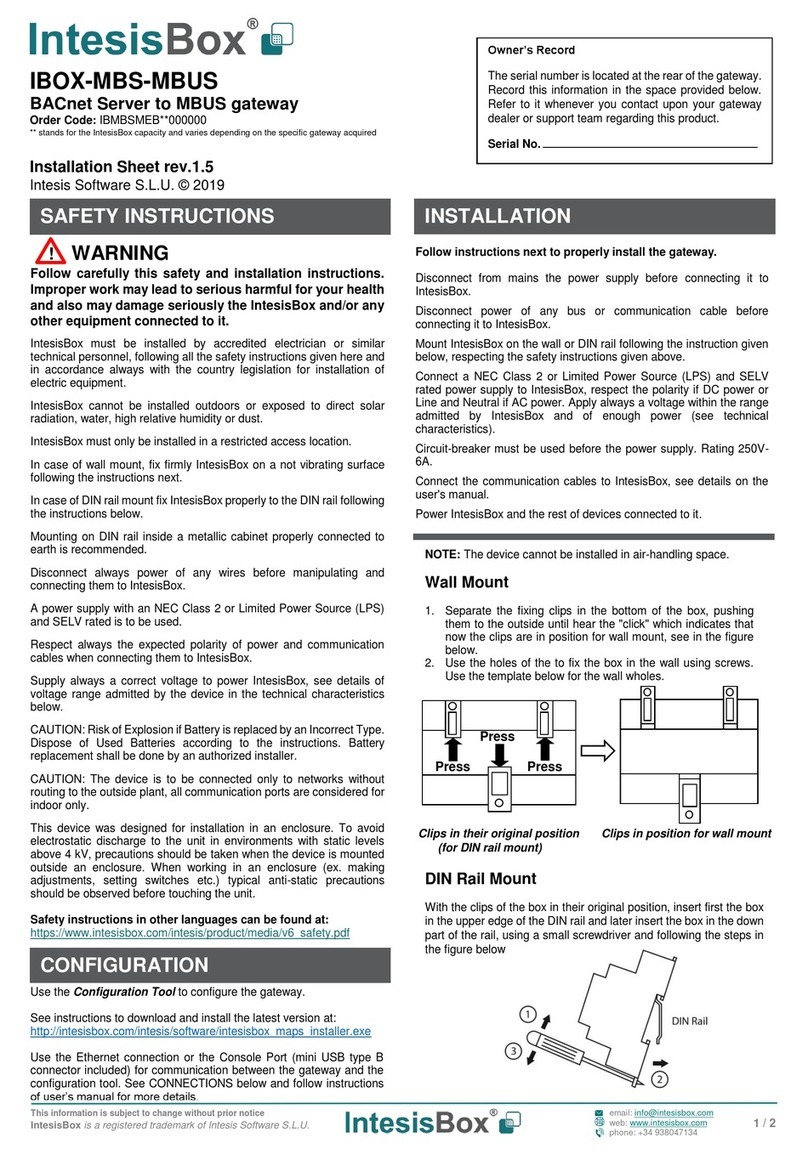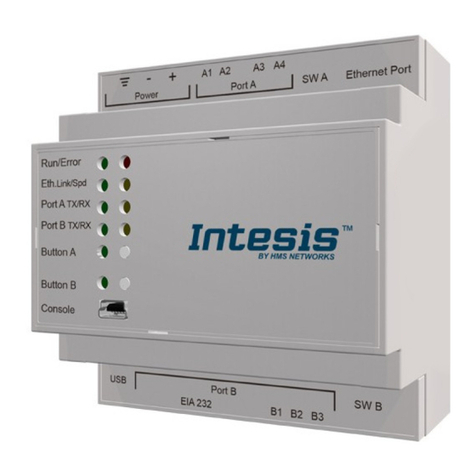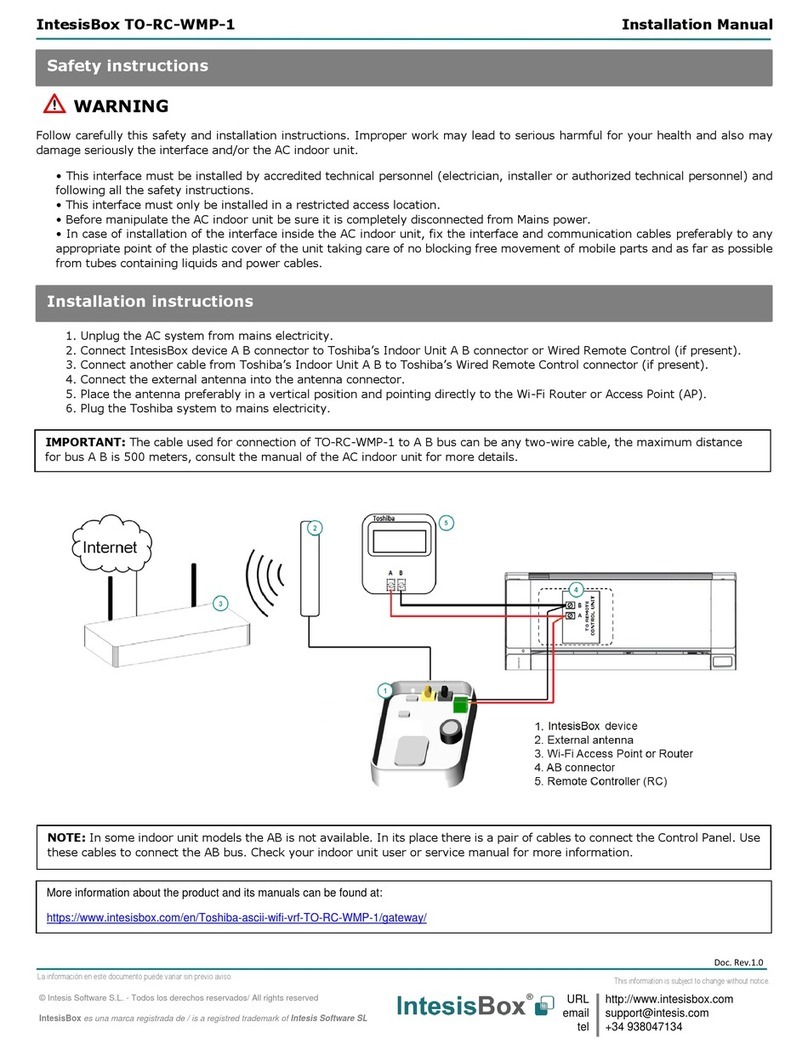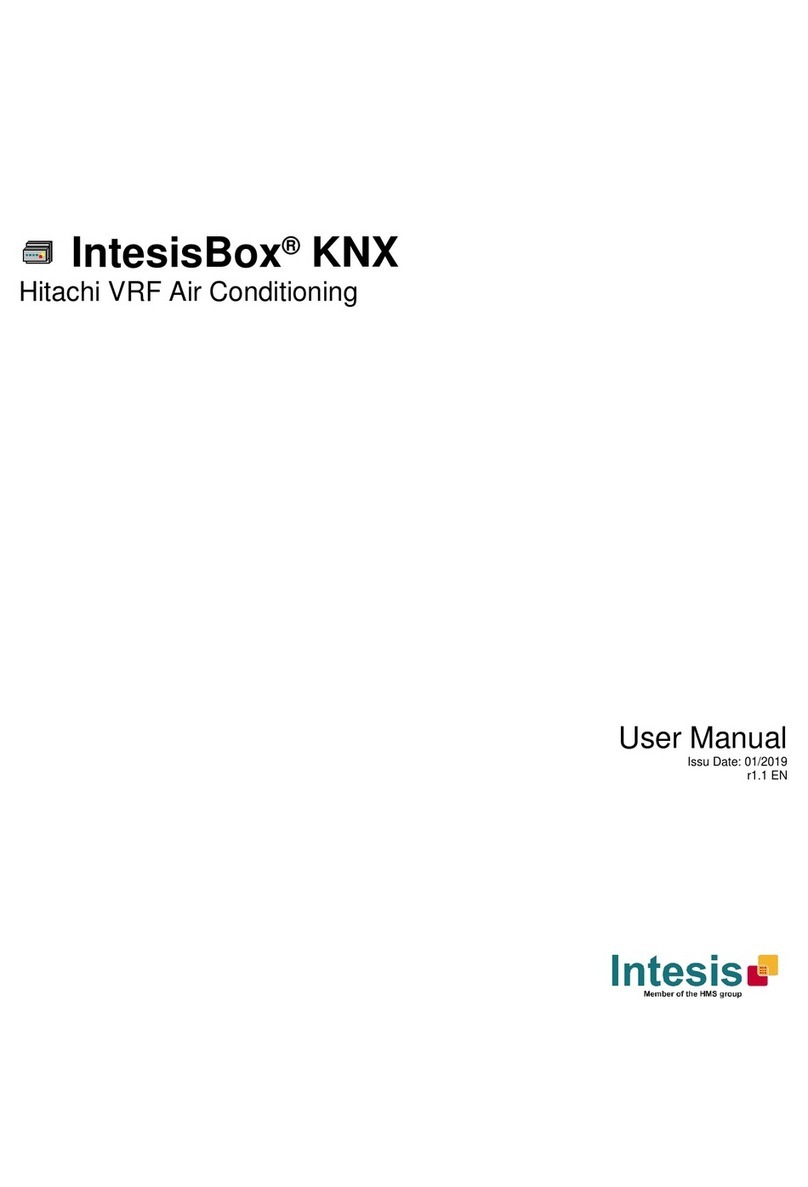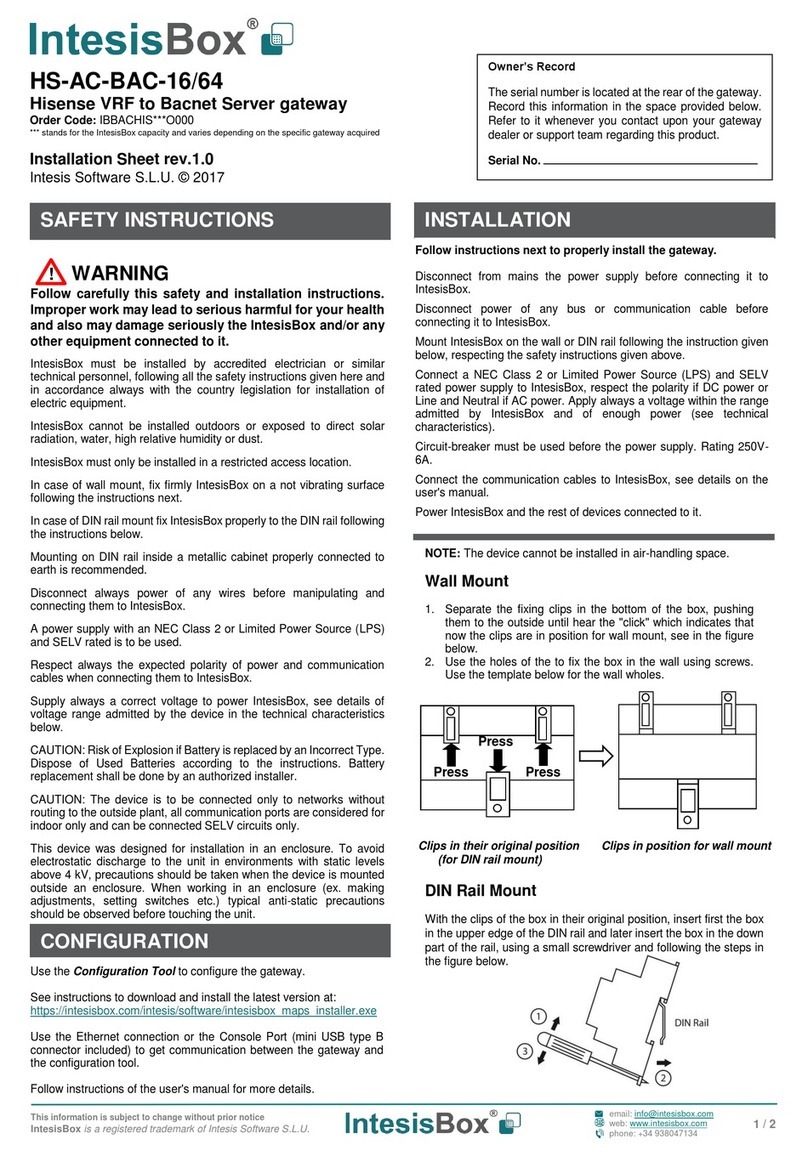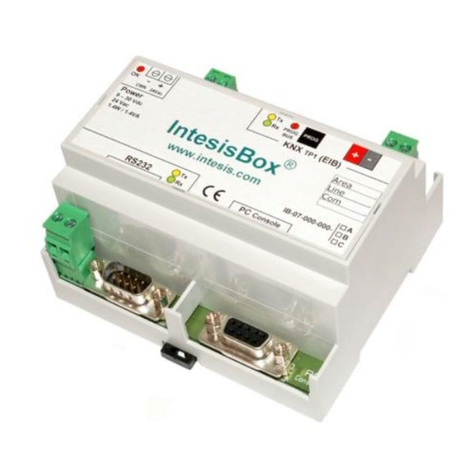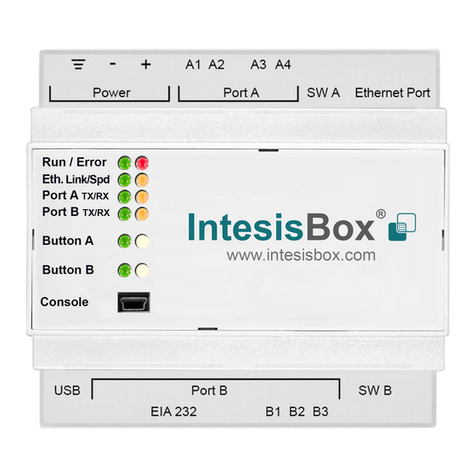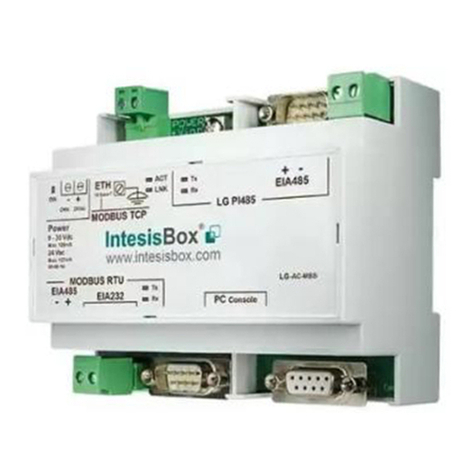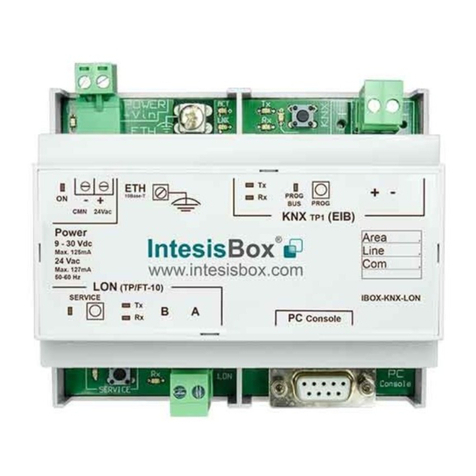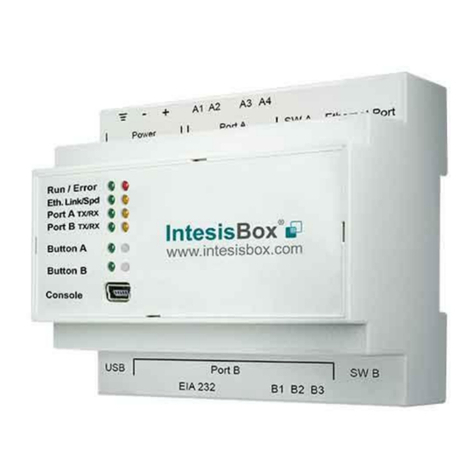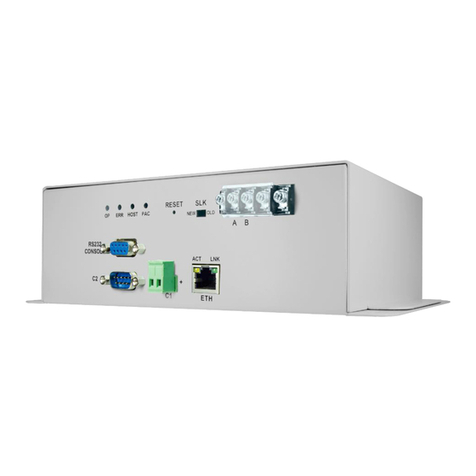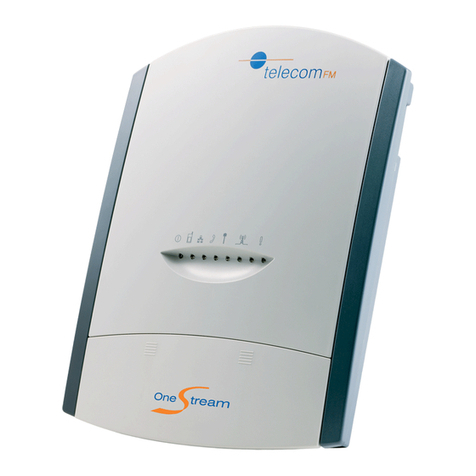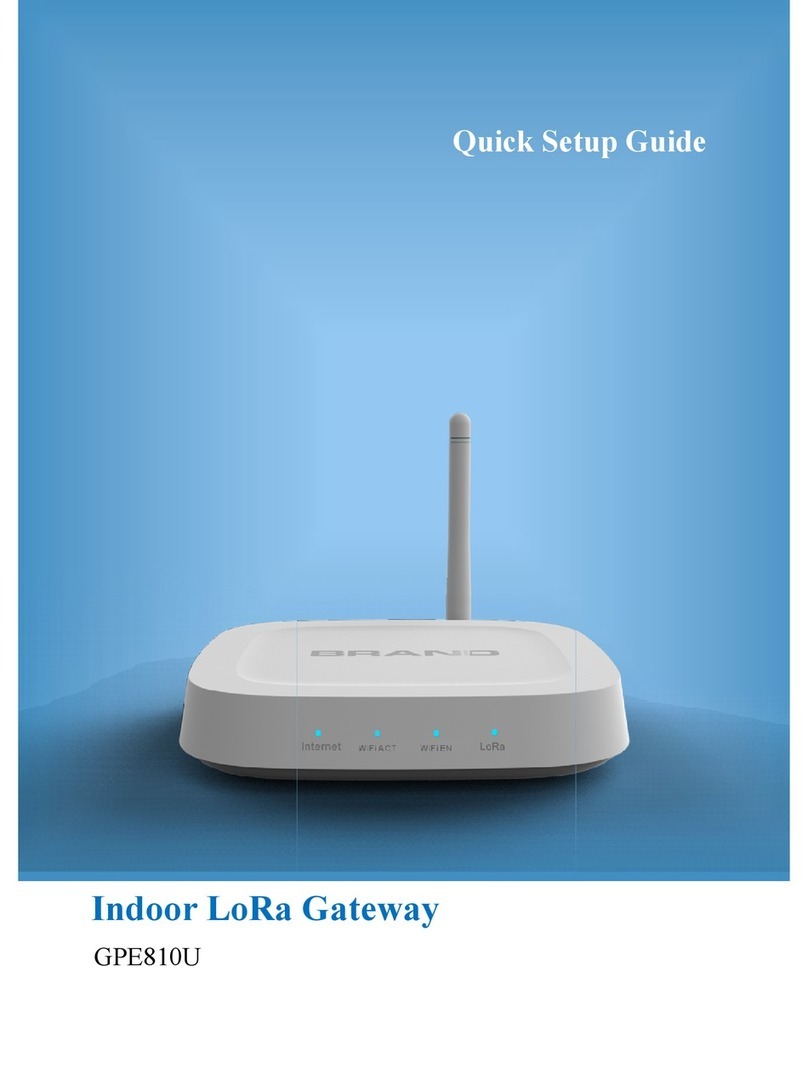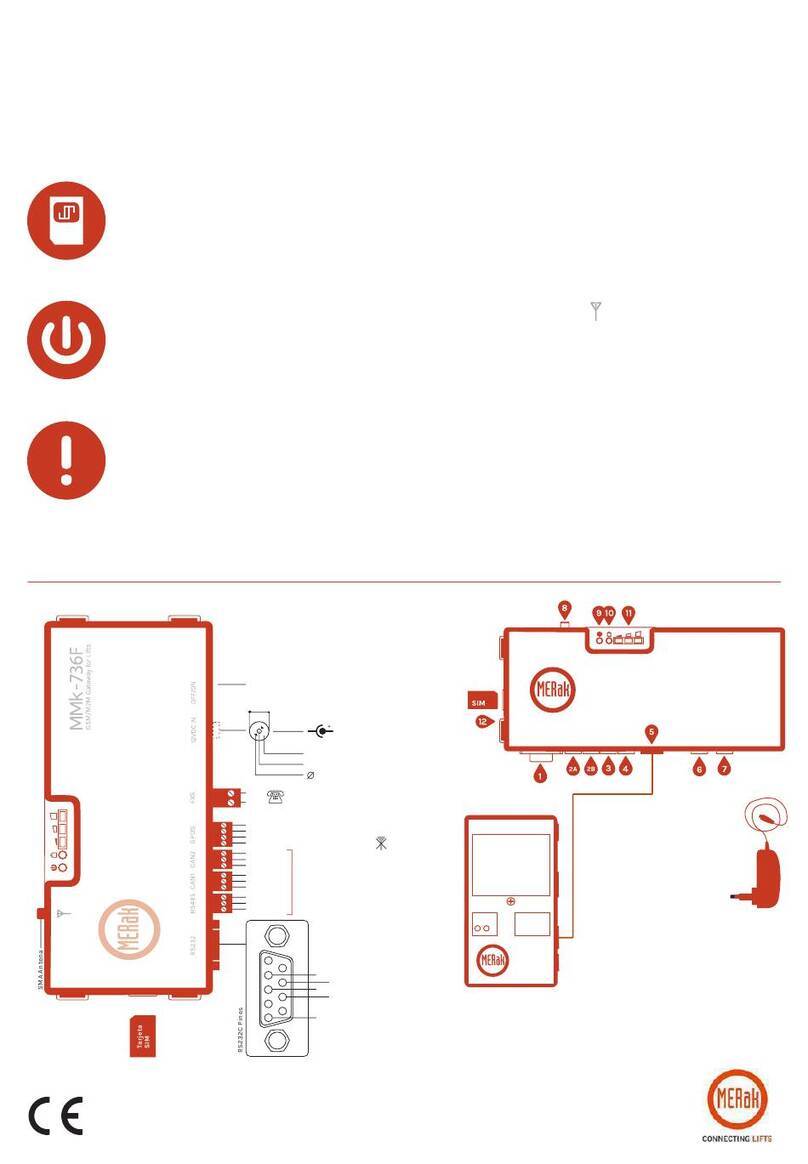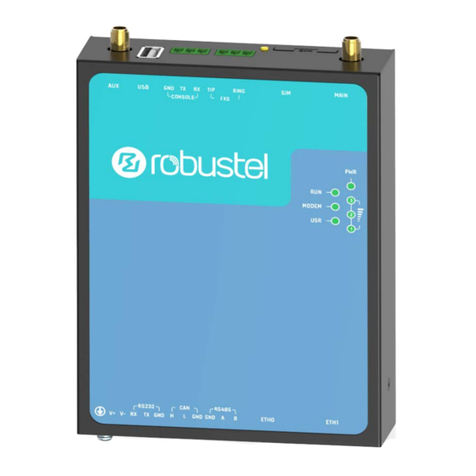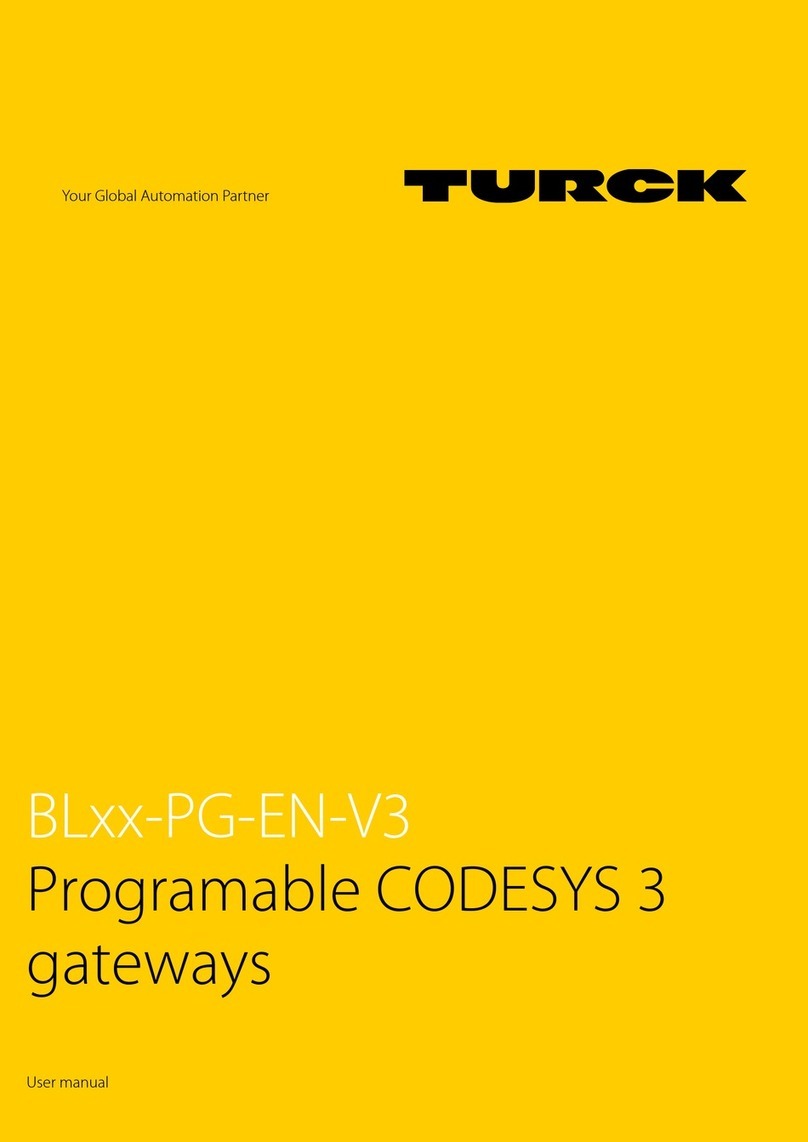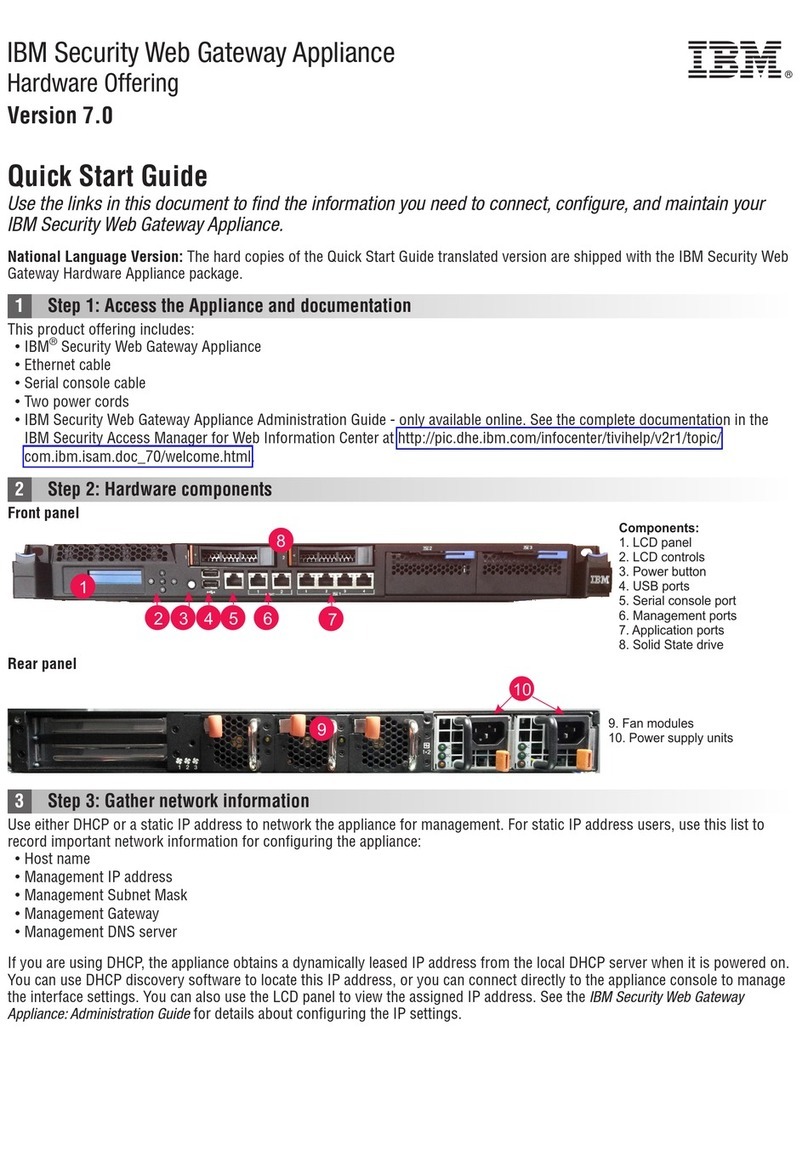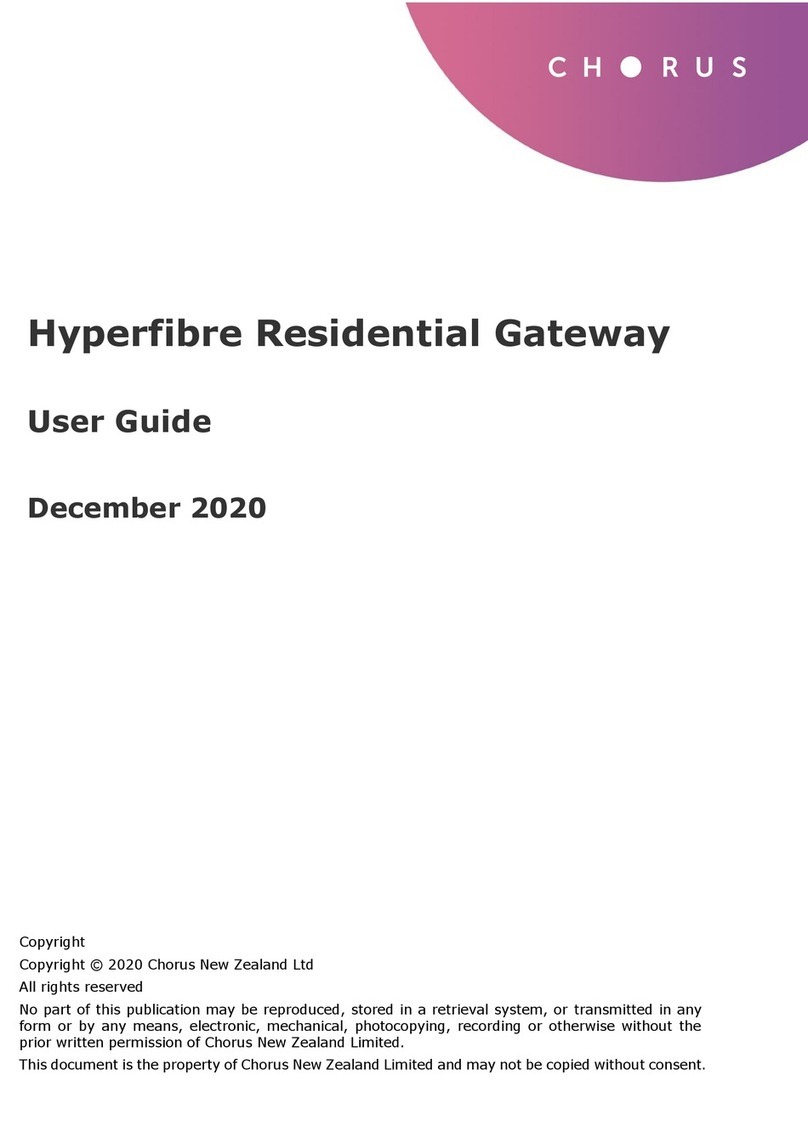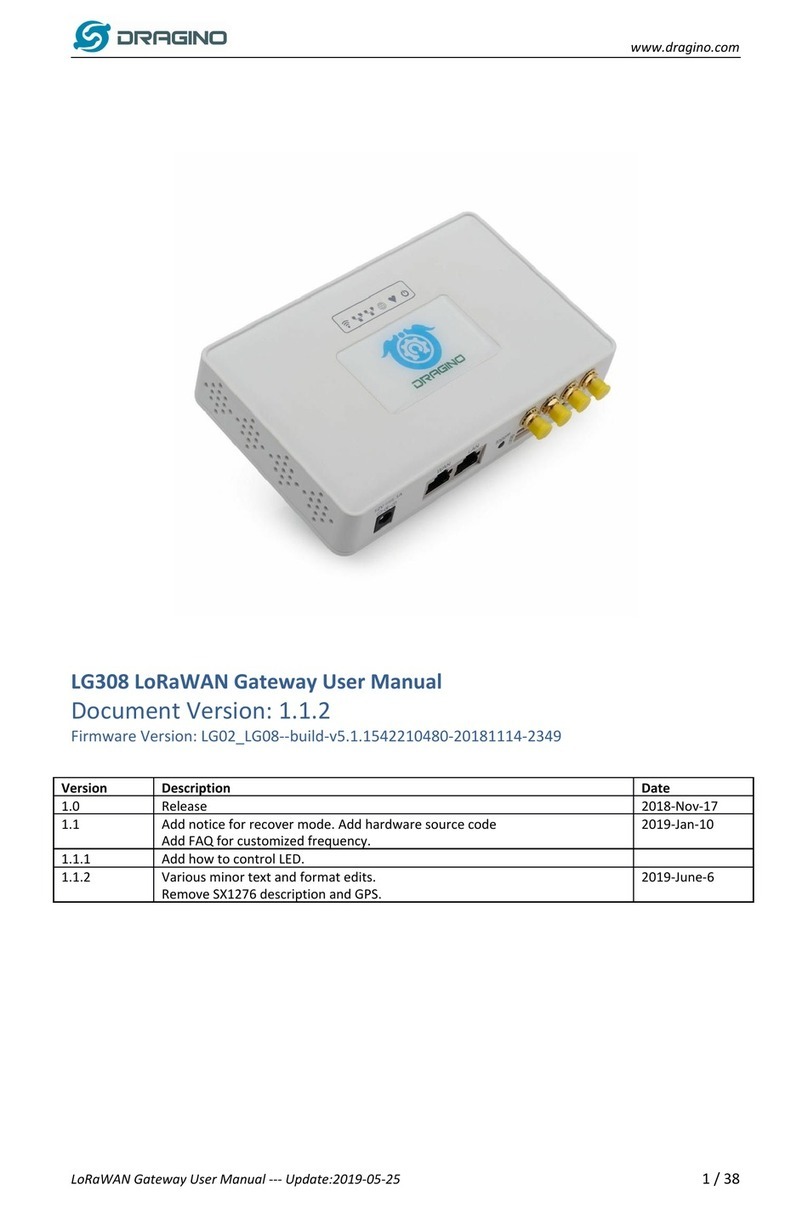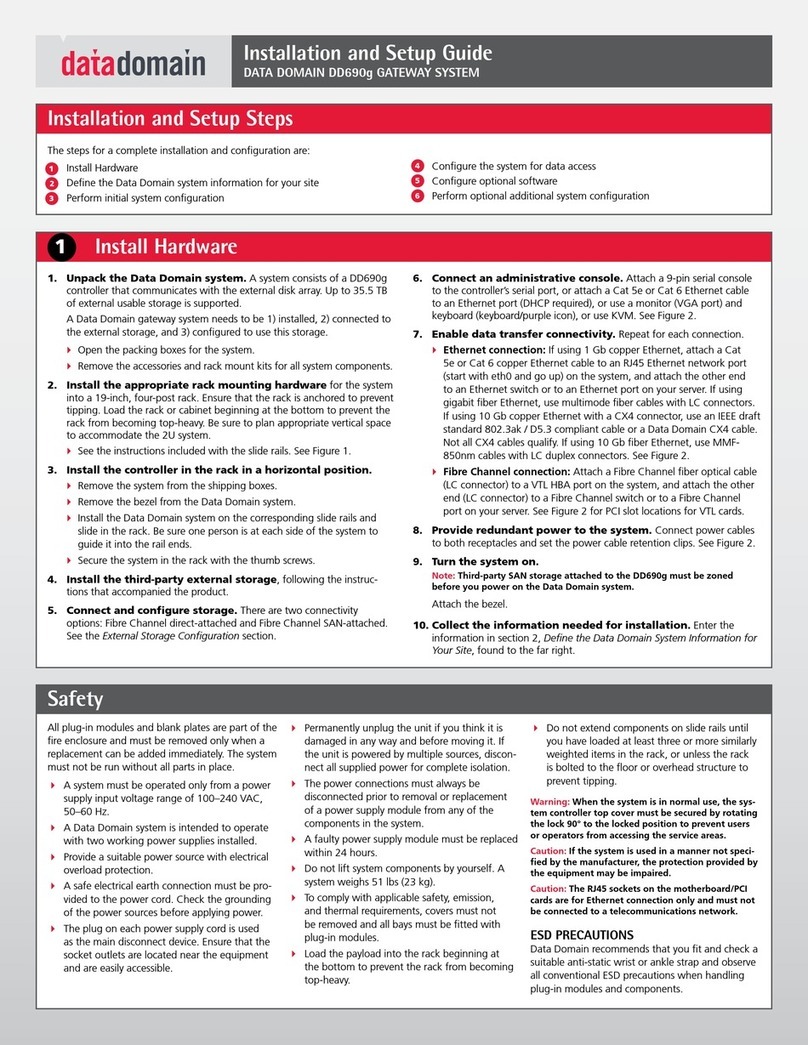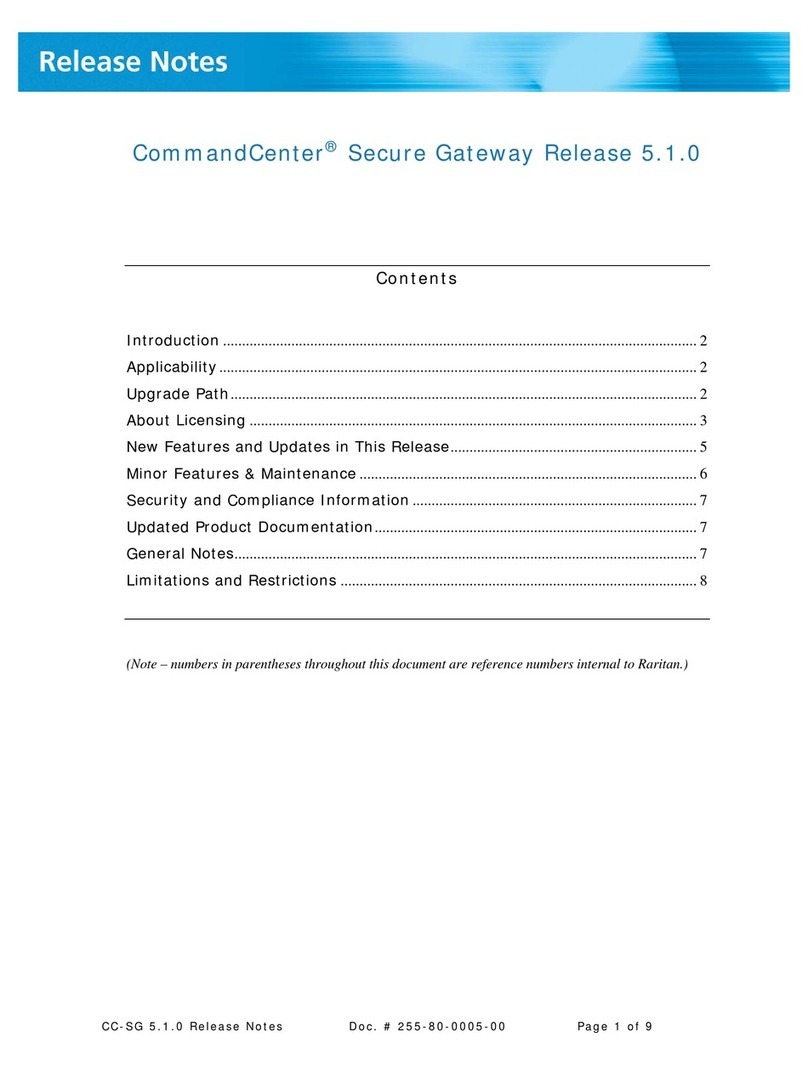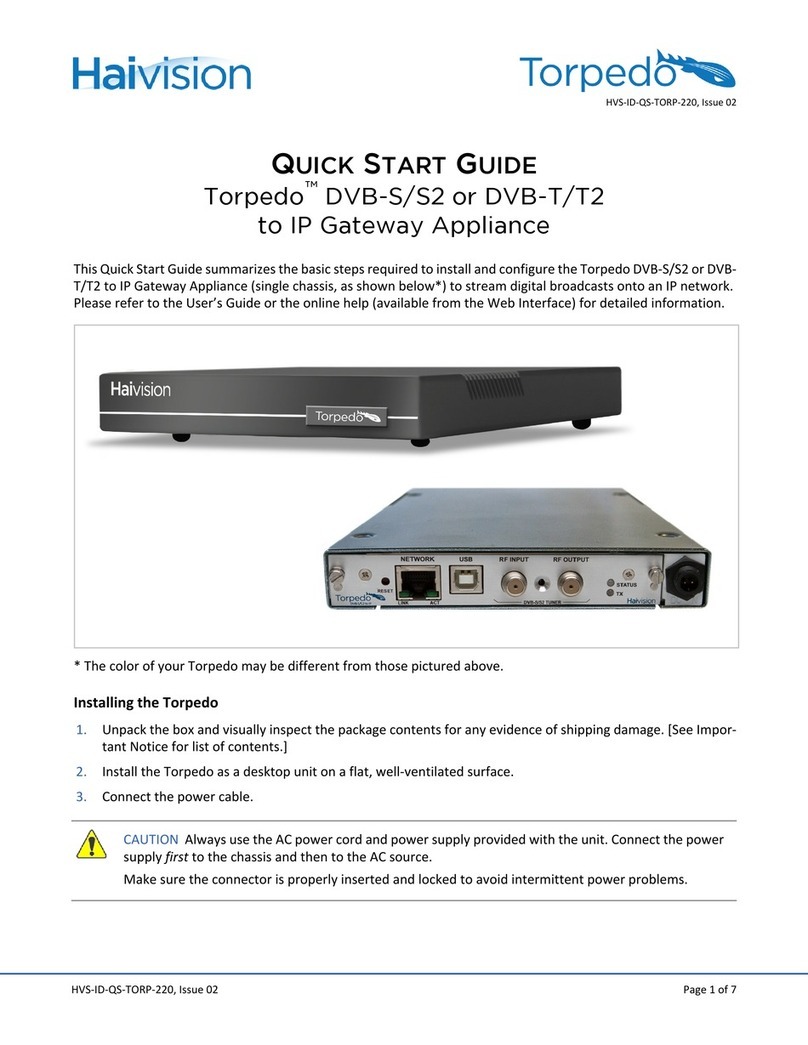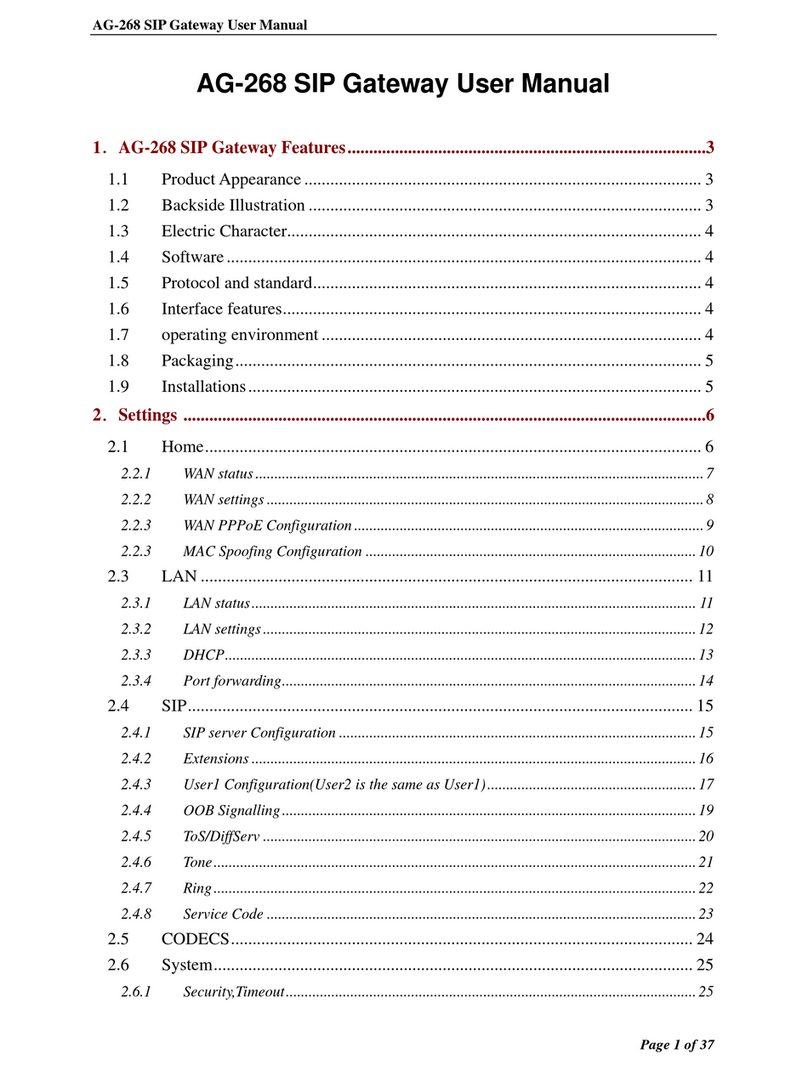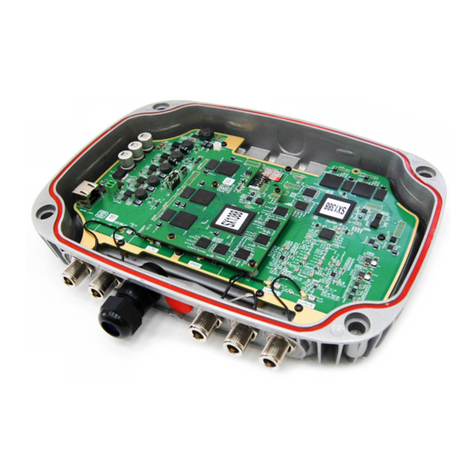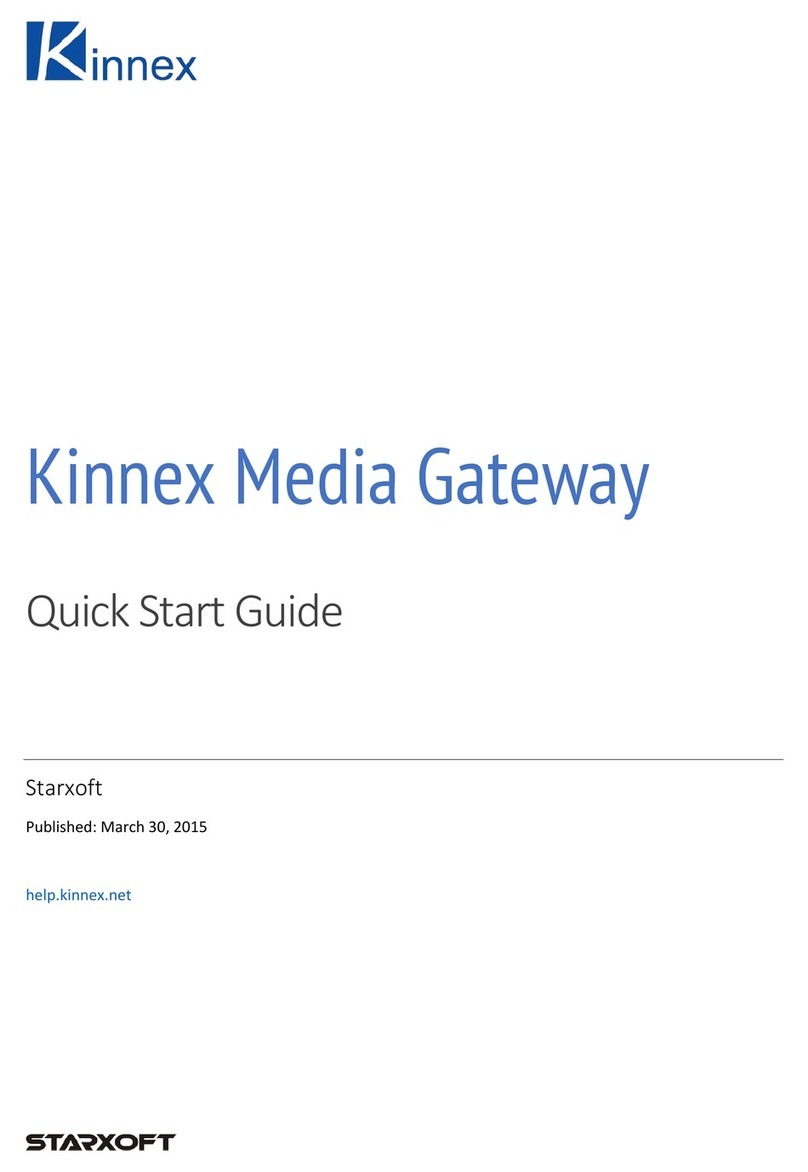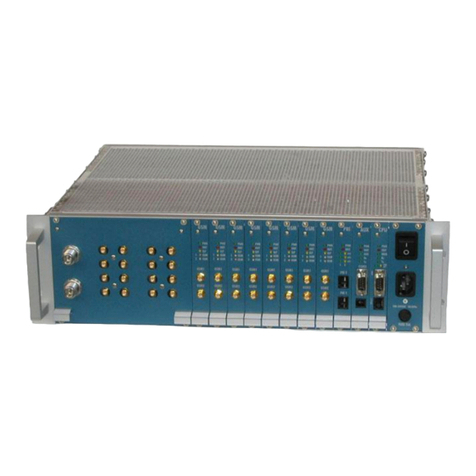Additional to the binding aspect commented above, it is also important to notice that each
KNX communication object has a defined EIS type. The EIS type of a communication object
defines the bit length and coding of the data it represents. Communication objects associated
by means of a group address need to match the same EIS type, in order to communicate
consistently.
So, at configuration time it is required that for each datapoint configured on IntesisBox an
EIS type is defined. Datapoints on IntesisBox KNX support the following EIS-types:
•EIS1 - Switching (1bit raw)
•EIS2 - Dimming (4bit raw)
•EIS5 –Value (16bit –floating type)
•EIS6 –Scaling (8bit –scaled 0%-100% in values 0-255)
•EIS7 –Drive Control (1bit raw)
•EIS8 –Priority (2bit raw)
•EIS9 –IEEE 754 float (32bit –floating type)
•EIS10 –16bit Counter (16bit raw)
•EIS11 –32bit Counter (32bit raw)
•EIS13 –ASCII char (8bit raw)
•EIS14 –8bit Counter (8bit raw)
ETS software tools are not used to configure IntesisBox. Though, it’s typical that the choice
of which KNX group addresses to use is restricted or defined by an ETS-based project. If that’s
the case, the KNX installer/integrator needs to provide the set of group addresses prior to
doing the configuration of datapoints in LinkBoxEIB.
Also, a dummy ETS application is provided by Intesis Software (section 6), which can be
imported into ETS. This application is nor downloadable into IntesisBox KNX neither usable
for IntesisBox configuration. Rather, it poses as a means of having a device in the ETS project
representing the IntesisBox KNX and its own datapoints/communication objects, and to which
group addresses are associated.
2.2 Mitsubishi Electric G50
This gateway from Mitsubishi Electric offers the signals of the City Multi AC system through
XML protocol. Every G50 (G-50A, GB-50A, GB-50ADA, EB-50, AG-150A or AE200A) allows
access to the signals of up to 50 City Multi indoor units and 50 groups, no matter the number
of outdoor units installed. In the G50, the group is the control unit; every group can have
from 1 to 16 associated indoor units. This integration supervises and controls groups, not
indoor units, although if only one indoor unit is associated to every group then you can
supervise and control indoor units individually.
This G50 gateway is supplied by Mitsubishi Electric. The difference between the G-50A and
GB-50A/GB-50ADA is that the first incorporates display and keyboard and the second ones
just blind cover. The new AE-200A is also compatible with IntesisBox (with or without
Expansion Controllers). At integration level, all of them allow the same functionality. Contact
your nearest Mitsubishi Electric distributor for more details about G-50A, GB-50A, GB-50ADA,
EB-50, AG.150A and AE200A. In this document we will refer to this gateway models (G-
50A, GB-50A, GB-50ADA, EB-50, AG-150A and AE200A, without Expansion
Controllers) as just G50. An AG-150 with 2 EC would work as 2 G50. An AE200A with
1 EC shall work as 2 G50.
The following list shows the available signals to integrate per every group (of the 50 possible)
of the G50:
